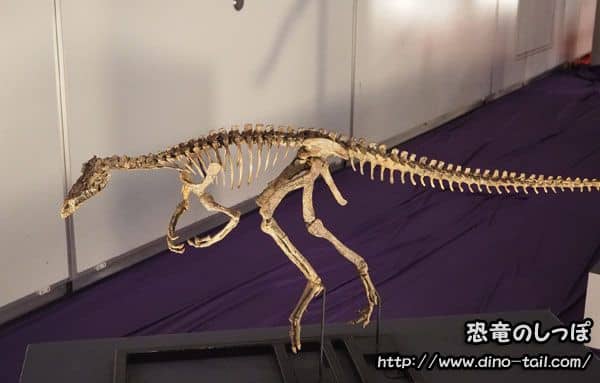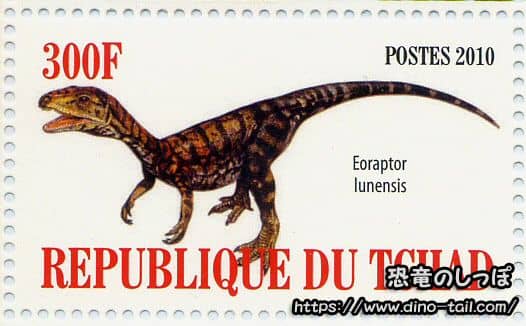About Eoraptor
| Scientific Name (Genus) | Eoraptor |
| Meaning of Name |
Dawn thief
ēōs (dawn) [Greek] - raptor (thief, plunderer) [Latin] |
| Classification | Saurischia, Sauropodomorpha |
| Total Length | Approx. 1m |
| Diet | Omnivorous |
| Period | Late Triassic |
| Species | Eoraptor lunensis |
| Year of Paper Publication | 1993 |
| Genus Name Publication | Sereno, P.C., Forster, C.A., Rogers, R.R., & Moneta, A.M. (1993). Primitive dinosaur skeleton from Argentina and the early evolution of the Dinosauria. Nature, 361. |
Characteristics
Eoraptor is one of the earliest dinosaurs, living in the Late Triassic (about 230-228 million years ago).
It was discovered in Argentina. Although long considered a theropod, new discoveries and research since 2011 have raised the possibility of it being reclassified as a sauropodomorph.
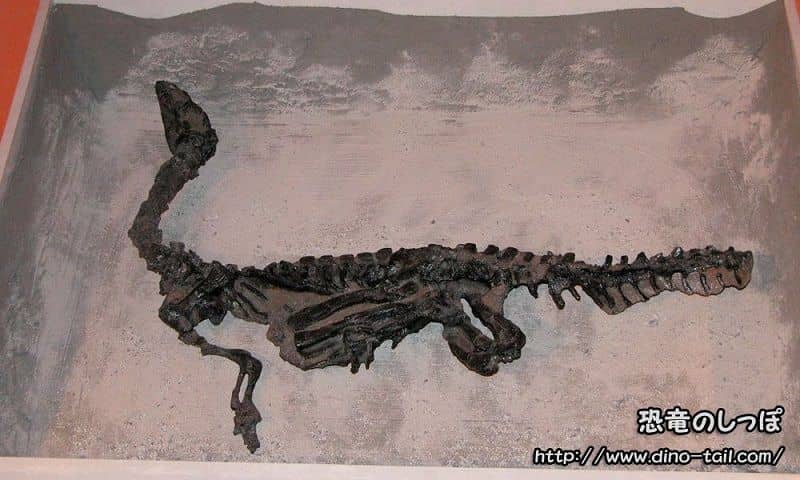
Eoraptor is one of the earliest known dinosaurs.
Its long hind legs and lightweight body suggest it could run much faster than previous reptiles. During the Late Triassic (about 230-228 million years ago) when Eoraptor thrived, it would have been a major threat to other small animals.
It had five fingers on its forelimbs (hands), two of which were becoming vestigial.
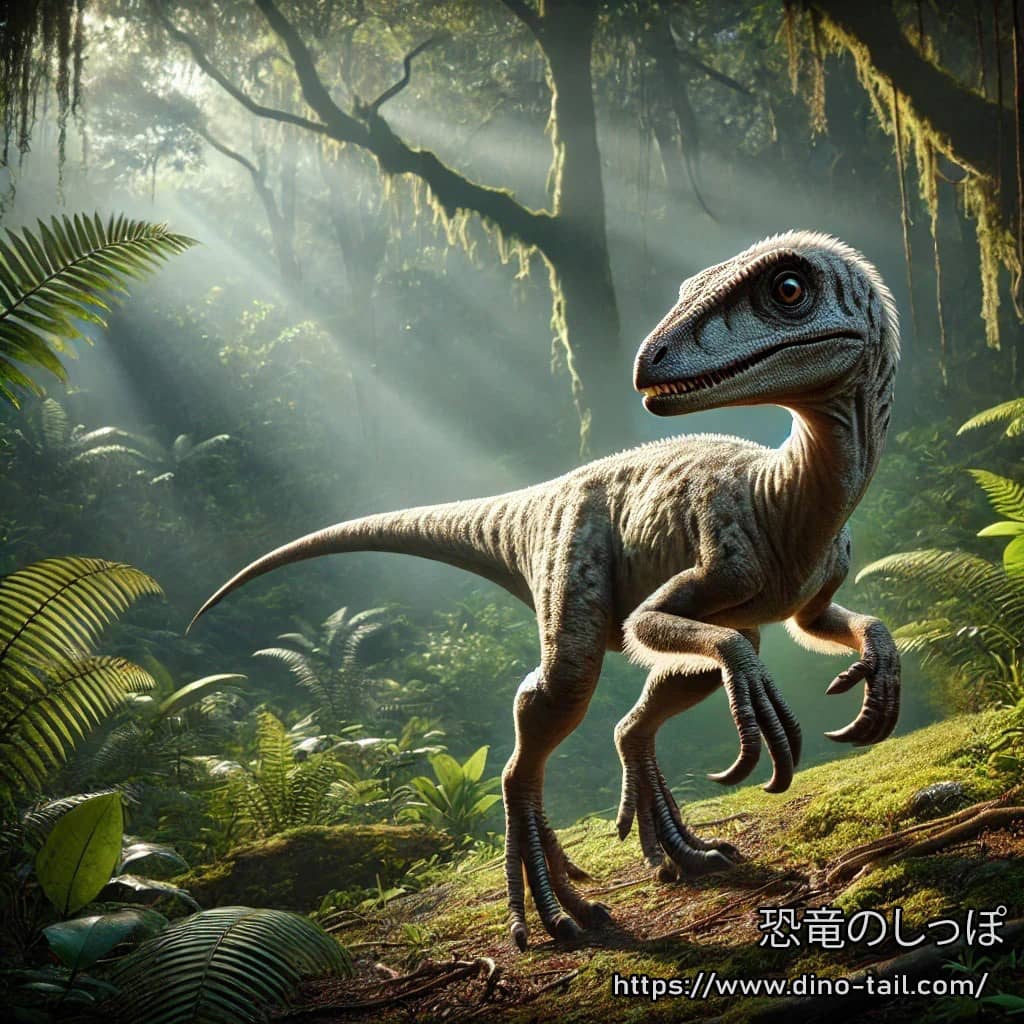
Powered by DALL-E3, 2024.
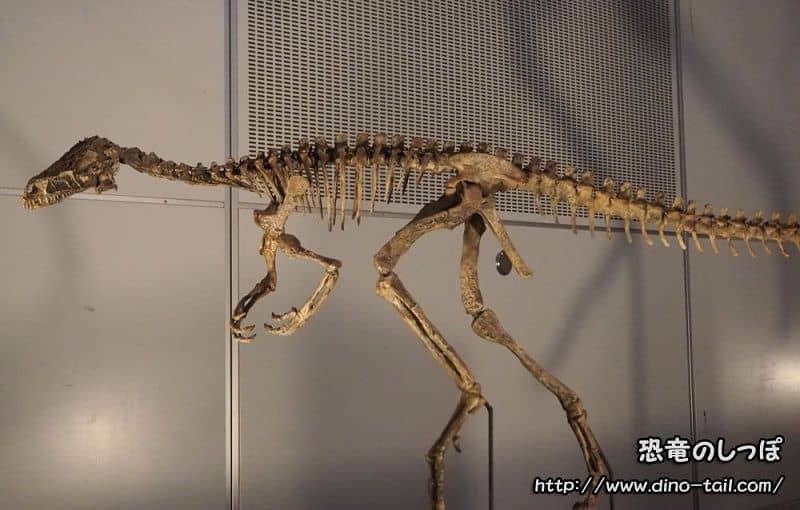
Theropod or Sauropodomorph?
From its description in 1993 until 2011, Eoraptor was considered a theropod. The teeth at the back of its jaw are sharp, characteristic of carnivorous theropods.
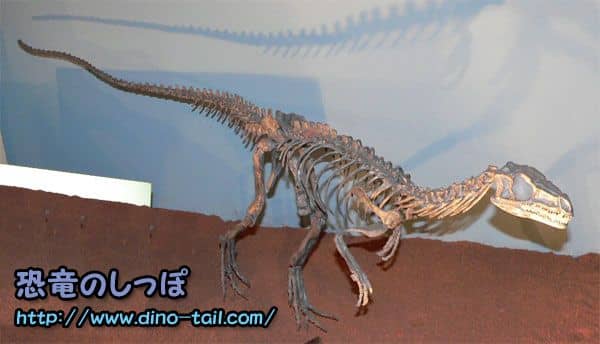
The controversy began with the study of the new dinosaur genus Eodromaeus in 2011.
Eodromaeus lived in the same region at roughly the same time as Eoraptor. Initially thought to be a species of Eoraptor, further investigation revealed its unique characteristics, and "Eodromaeus" was described as a separate genus.
In the course of studying Eodromaeus from 2011-2013, comparisons with Eoraptor revealed that Eoraptor possessed features of sauropodomorphs.
The teeth at the front of its jaw were leaf-shaped, similar to primitive sauropodomorphs. Also, the shape of its external nares and forelimb fingers resembled those of sauropodomorphs. Eoraptor was a dinosaur that combined features of both theropods and sauropodomorphs.
Currently, its classification as an early sauropodomorph is widely supported.
This classification debate is crucial because the position of Eoraptor is key to solving the great mystery of what the common ancestor of all dinosaurs looked like. If Eoraptor was an ancestor of sauropodomorphs, it means that adaptation to herbivory began very early in dinosaur history. This small dinosaur is an extremely important being for understanding how the saurischians (theropods and sauropodomorphs), which would later flourish, diverged and evolved.
The Quest for the "Oldest Dinosaur"
Eoraptor is often introduced as the "oldest dinosaur," but the quest for this title is ongoing in the world of dinosaur research.
From the same Ischigualasto Formation in Argentina as Eoraptor, the larger early dinosaur Herrerasaurus has also been discovered, and both are representative figures of the dawn of the dinosaur age. Furthermore, in Tanzania, Africa, fossils of a creature called Nyasasaurus have been found in a formation about 10 million years older than Eoraptor. However, because the Nyasasaurus fossils are fragmentary, there is disagreement among researchers as to whether it was a "true dinosaur" or a close "dinosaur cousin."
Thus, Eoraptor holds the extremely important position of being "one of the oldest creatures that can be definitively called a dinosaur."
Discovery and Publication
It was discovered in 1991 by paleontologist Ricardo Martínez of the University of San Juan, Argentina. It was excavated over 12 months from the mudstone rocks of the Cancha de Bochas member of the Ischigualasto Formation in Argentina.
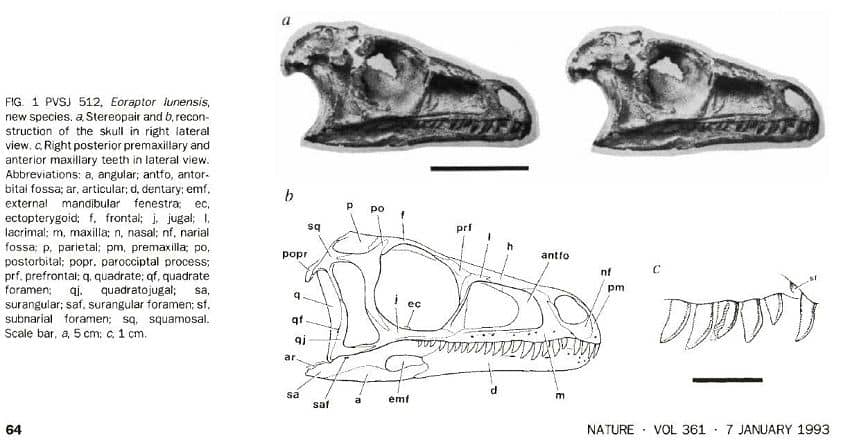
Source: Sereno, P.C., Forster, C.A., Rogers, R.R., & Moneta, A.M. (1993). Primitive dinosaur skeleton from Argentina and the early evolution of the Dinosauria. Nature, 361.
In 1993, Paul Sereno, Catherine Forster, Raymond R. Rogers, and others described the new genus Eoraptor and the new species Eoraptor lunensis.
In 1997, Philip Currie reported that it possessed features of both Ornithischia and Saurischia, and the debate over the classification of Eoraptor intensified with the description of Eodromaeus in 2011. In 2013, discoverer Martínez argued that Eoraptor was likely a primitive sauropodomorph.
Eoraptor Stamp & Fossil Gallery
